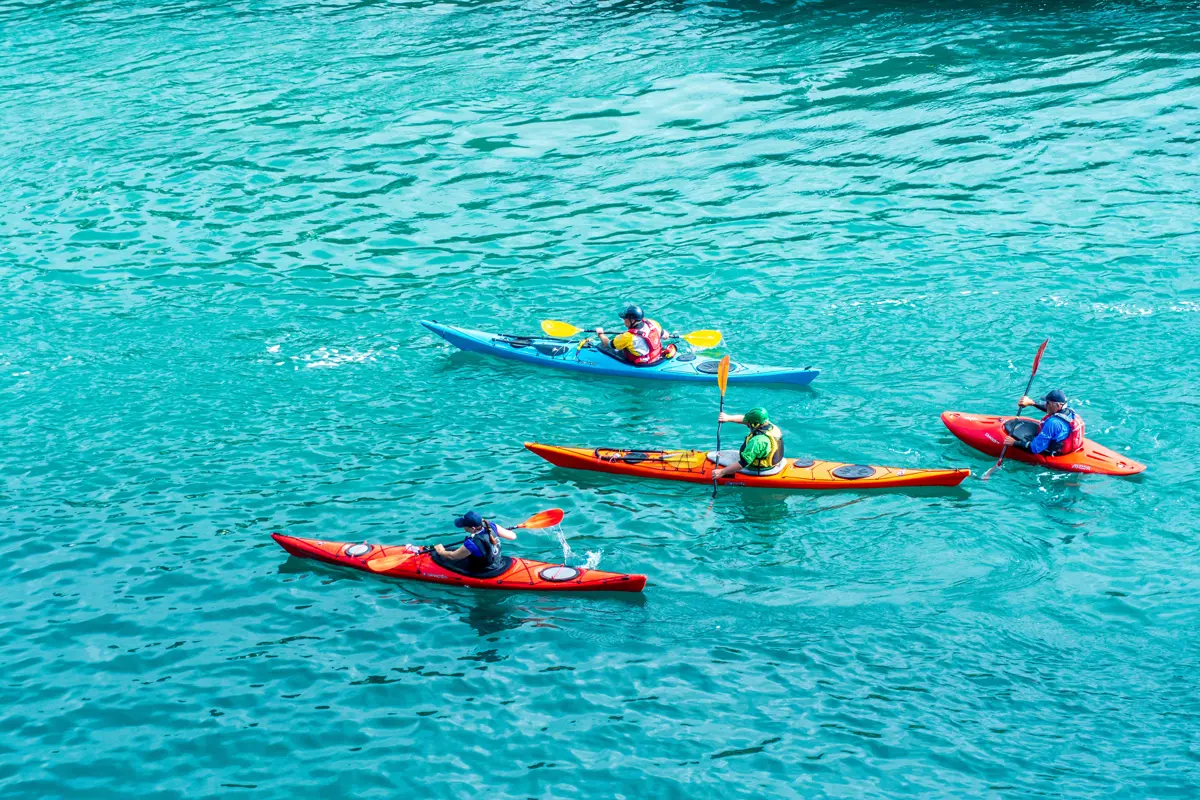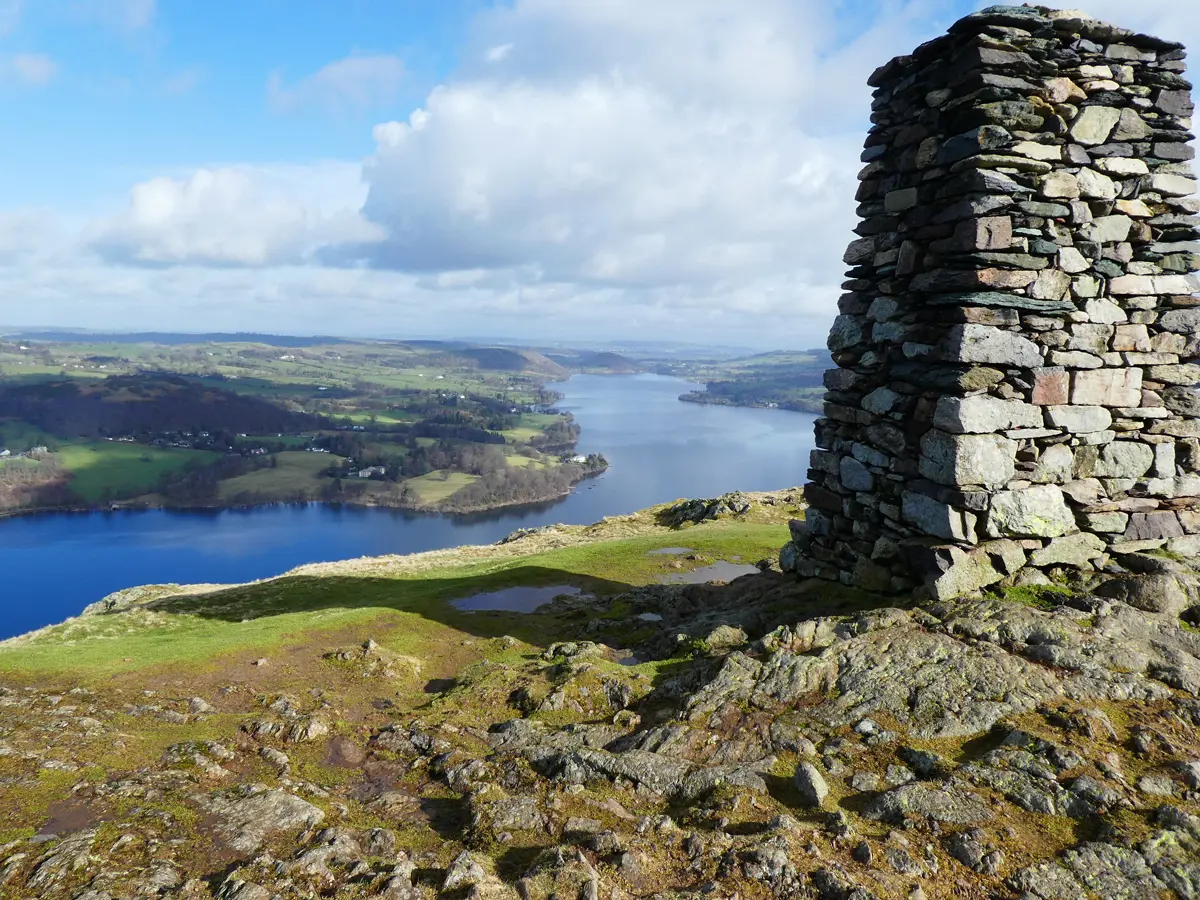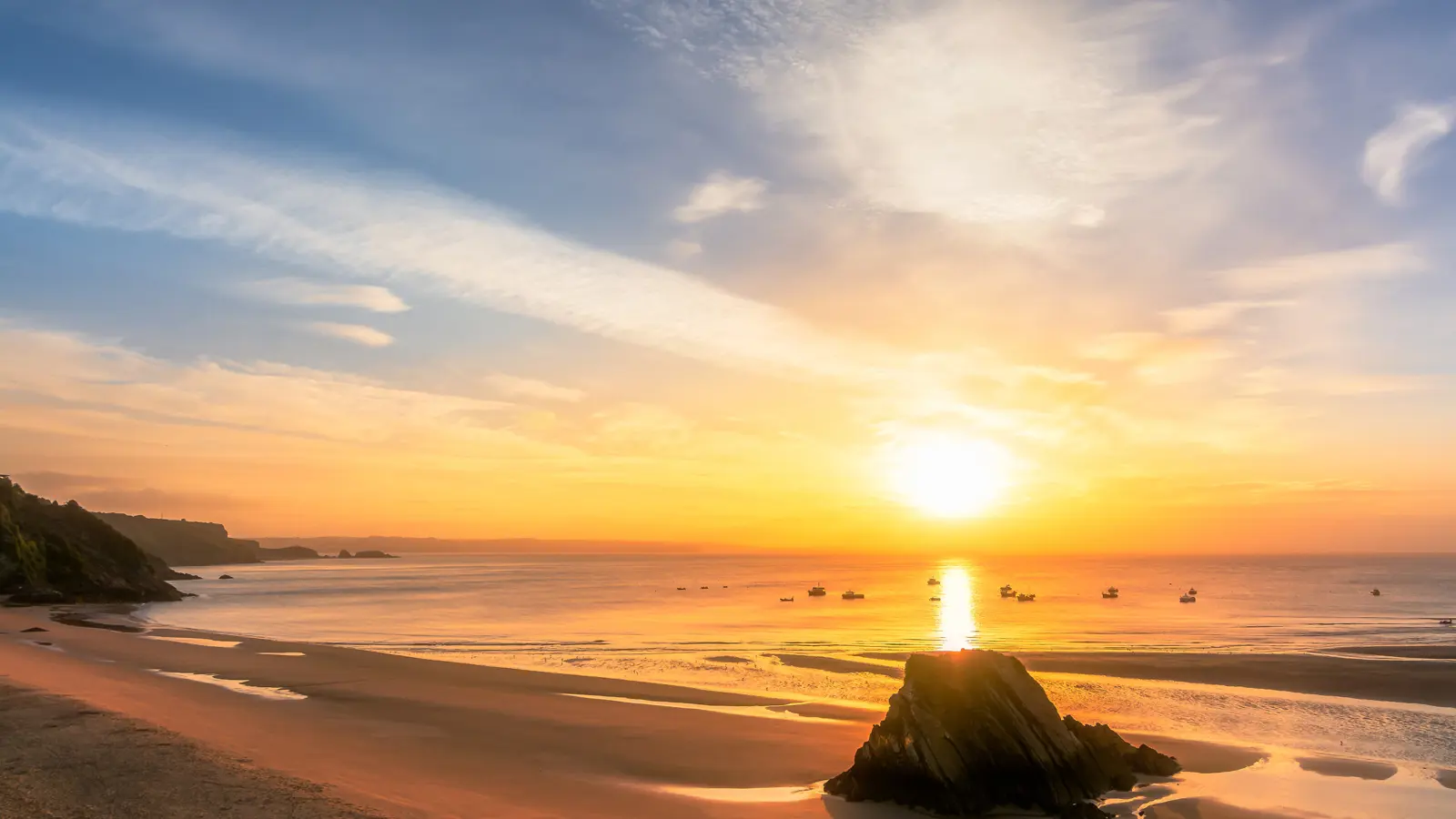Best kayaking locations in the UK
16 July 2021
Whether you’ve taken it up as a new sport in lockdown, or you’ve always enjoyed paddling out on the water, kayaking is a brilliant activity no matter what your age or ability.
You can take things at your own pace, choose easy or difficult routes, and enjoy it alone or as part of a group. And campervan owners have the perfect vehicle for transporting these brilliant boats – just secure them to your roof rack and away you go!
Obviously you’ll need some adequate insurance for a campervan in place before you set off to cover both your vehicle and its contents. Call the helpful team at Lancaster today for a quick quote.
In this article we’ll explore a little bit more about this amazing activity – the best places to do it, how to get a licence if you need one and some top tips to keep you safe while you’re out on the water.
Kayaking is the perfect mindful pastime, helping you to unwind and keep fit at the same time. Why not pack up the camper and head off this weekend?
What’s the difference between a kayak and canoe?
Before we get started, do you know the difference between a kayak and a canoe? If you’re a beginner, here’s a quick reminder on how to tell them apart.
Canoes:
- single blade paddles
- sitting or kneeling position
- open deck
- better for travelling at a leisurely pace
- allows you to move around more freely inside
Kayaks:
- double bladed paddle
- sit with your legs straight out in front of you
- can have an enclosed deck
- better for faster water or competitions (but you can go slowly, too!)
- secure seat position
All the locations featured in this article are suitable for both canoes and kayaks. Just choose which one you prefer, load up the campervan with your gear and prepare to have some fun! Just make sure you’ve got campervan insurance before you go.

Do I need a licence?
The UK’s many rivers, lakes and inland waterways make it an ideal place to explore by kayak. But before you get ready to launch, check whether you need a waterways licence (sometimes known as a river licence) to paddle on that particular stretch of water.
GoPaddling has some expert advice on this. You can read more on their website, but just as a summary, different bodies manage different waterways around the UK and by charging a licence fee, it helps them to pay for the maintenance and up-keep of these important places open for all to enjoy.
There are four types of waterway licence available:
British Canoeing membership
This is for people who live in England. It’s £45 per year and gives you access to 4,500km of waterways across England and Wales.
Canoe Wales membership
This is for people who live in Wales. Again, it’s £45 per year and covers waterways in both England and Wales.
Canal & River Trust licence
This is £51 per year open to all UK residents and covers the waterways managed by the Trust in England and Wales.
Norfolk Broads Licence
Just £27 a year, this is open to all UK residents and gives you access to the Norfolk waterways.
You can find a list of waterways that do and don’t require a licence on the British Canoeing website here.
You won’t need a licence for every single river or stretch of water in the UK but if you’re planning on doing a lot of kayaking it’s best to get a licence just to be safe.
12 of the best kayaking spots in the UK
If you’re searching for some peace and tranquillity on your kayak, this must be the perfect place. Starting near Bruton in Somerset, you can kayak on the River Brue for 31 miles past the famous town of Glastonbury and towards the coast at Burnham on Sea. From Grade I-listed bridges to spectacular nature reserves, this gentle route is packed with interesting sights and wildlife to discover. And the best bit? You don’t need a licence to paddle here.
Perhaps you’re already familiar with the beauty of Beaulieu thanks to its iconic motor museum? Whether you like getting your kicks on four wheels or on the water, this is the place for you! You don’t need a licence to paddle on the River Beaulieu, but you will need to pay a small fee at the harbour office as it’s privately owned. If you’re looking for a quick route, try the four-mile stretch from Bucklers Hard to the Solent. Check your route before you travel – as its’s a tidal river, some sections are unpassable at low tide.
-
Little Venice to Camden, London
Once you’ve got your British Canoeing membership, you can launch your kayak just north of Paddington at Little Venice. Paddle past the beautiful Regency architecture to London Zoo before arriving at bustling Camden. If you’re tired on the way, you can stop at one of the many cafes or cosy pubs en route. This is the perfect way to discover the capital from a whole new angle!
Keen paddlers won’t be phased by the strong winds that can whip up on Ullswater. If you’re looking for dramatic scenery, the second largest lake in Windermere certainly provides this, surrounded as you are by incredible mountains and hills. No licence is required for paddling on Ullswater so you can make an impromptu stop during your campervan tour of the Lakes. Just make sure your campervan insurance is up to date if you’re going to a remote location such as this.

If you’re an experienced paddler looking for the thrill of white water, you’ll find it in all its forms on the North West’s River Dee. Head for the Serpent’s Tail for a rapids course that will get your heart racing. There are plenty of other more sedate options if you prefer a slower pace to take in all the flora and fauna this area has to offer. There is no licence requirement for paddling on the River Dee.
If you’re travelling in your camper on a Scottish adventure, make a stop off at the River Spey – one of the longest rivers in the UK – for a spot of paddling. Be beware, this river is fast flowing so only the most experienced kayakers should attempt a paddle here. If you do give it a go, you’ll be rewarded with a view of wild salmon if you’re lucky. But if it all becomes too much for you, why not stop off at one of the nearby distilleries to warm up with a whisky? Just make sure you’ve got a designated driver for the ride back to the campsite!
-
River Wey Navigations, Surrey
Explore a different side of Surrey in your kayak on the River Wey Navigations – a 20-mile stretch of beautiful waterways between Guildford and Godalming that was first opened in 1653. You’ll need a licence from the National Trust to paddle here, or a British Canoeing membership. In this area of outstanding natural beauty, you will see dragonflies, kingfishers, locks and water mills as you paddle along at your own pace. Perfection!
If you’re kayaking or canoeing with children or grandchildren, then Studland Bay makes a great choice thanks to its sheltered nature. Head for Middle Beach surrounded by low cliffs or Knoll Beach with its undulating sand dunes. With Old Harry Rocks in the distance, this is perfect place to get your sea legs and experience the joy of kayaking for the first time. All with handy facilities and a National Trust food outlet nearby for when you get peckish after all that paddling!
Flowing for 54 miles, the River Lagan runs through Country Down, Belfast, and on to the Irish Sea. There are 16 launches in all with wonderful wildlife to spot up and down the route. The Belfast City Government’s website gives a list of access points but we recommend the route between Drum Bridge and Stranmillis Weir. There are a number of weirs on this stretch as well as a slalom course so it’s not a great choice for beginners but experienced paddlers should also enjoy the challenge. Check whether course fishing is taking place in the route during your planned trip here.
-
St David’s, Pembrokeshire
Next we head to South Wales and Britian’s only coastal national park. It’s a real challenge even for experienced paddlers so be warned! The Bitches near St David’s provide a white water ride with lots of whirlpools thrown in for a heart-thumping kayaking experience. See how Countryfile’s Julia Bradbury got on when she took on the route back in 2010. There are of course lots of other locations along the coastline where you can paddle at a more sedate pace and perhaps even stop for a spot of sunbathing on one of the many beaches. With 220 miles to explore, you’ll be thankful for that comfy campervan bed at the end of the day.

Paddlers wishing to explore parts of this 87-mile route should get themselves a British Canoeing membership or licence from the Canal & River Trust. Beware there are 105 locks to work your way around but there are plenty of stretches where you won’t be bothered by them. We like the Avoncliff and Dundas Loop, which takes in the weir at Limpley Stoke near Bath and the Dundas Viaduct. Alternatively you could head east and do a short paddle from Hilperton to Seend in Wiltshire and then stop off at the pub for a well-deserved pint at the end of the day.
-
River Cherwell, Oxford
Do you dream of paddling along a quiet, tree-lined route, with lush green riverbanks on either side and only yourself for company? Then head to the 40-mile River Cherwell and meander through the picturesque Oxfordshire countryside as slowly as you like. These shallow and narrow waters in part are perfect for beginners who want to take things steady. In addition, you don’t need a licence to paddle this route so it’s great for those newbie kayakers looking to give it a try for the first time. Banbury is the perfect place to stop for refreshment when you can pull yourself away from that idyllic rural scene. You’re spoiled for choice with campsites around these parts, with many Caravan Club-certified locations in the area.
5 top tips for kayaking safely
Keeping safe while you’re out on the water should be your top priority. Here’s a quick checklist to make sure nothing spoils the fun.
- Have you got all the clothing and essentials you need for a safe day paddling? Think wetsuit, boots, helmet, and buoyancy aids.
- Is your equipment in good condition? Check your kayak for holes, scratches or damage before you set off.
- Take a dry bag with a change of clothes, sun cream, food and drink as well as a small first aid kit.
- Is your mobile phone in a waterproof bag and within easy reach in case of emergencies?
- Have you checked the weather, tide or wind on your proposed route? If it’s not looking good perhaps it’s best to postpone especially if you’re just a beginner. Always make sure you tell someone the route you’re taking and when you expect to be back, too.
Planning a kayaking break in your campervan?
Before you strap your kayak to the roof of your campervan, you need to have adequate campervan insurance in place. Not only will this cover you for incidents out on the road, policies from Lancaster can also cover your van’s contents in case of theft.
Other benefits of our specialist campervan insurance can include:
- 24 Hour Claims Helpline
- Personal Effects cover up to £6,000
- EU cover up to 90 days
Get a quick quote for campervan insurance today.
Policy benefits, features and discounts offered may very between insurance schemes or cover selected and are subject to underwriting criteria. Information contained within this article is accurate at the time of publishing but may be subject to change.
